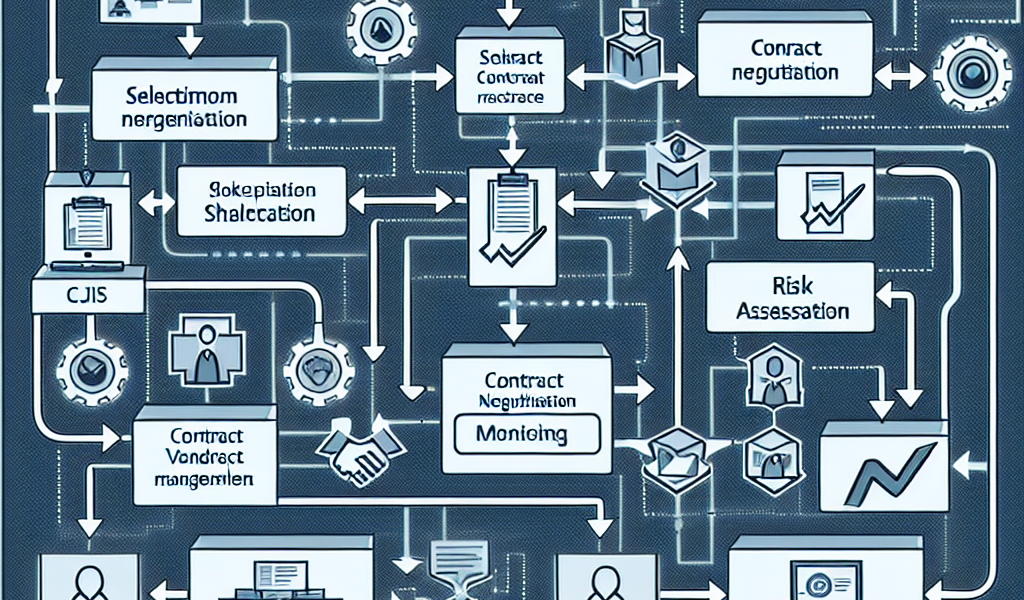In an era where data breaches and cyber threats loom large, organizations working with Criminal Justice Information Services (CJIS) must prioritize CJIS Ready third-party vendor management. This responsibility isn’t merely about compliance; it encompasses safeguarding sensitive data that can significantly impact public safety. The challenge of effectively managing vendors who handle this critical information can feel overwhelming. This article will address common pitfalls associated with vendor management, spotlight best practices for engaging CJIS-compliant vendors, and unveil strategies to boost third-party vendor security and compliance. By the end, you’ll be equipped with actionable insights that can transform your vendor management approach, ensuring the integrity and security of your organization’s data.
Best Practices for Managing CJIS-Compliant Vendors Effectively
To effectively manage CJIS-compliant vendors, organizations should first establish a clear and comprehensive vendor vetting process. This process should not only check for compliance with CJIS security policies but also assess the overall security posture of potential partners. Implementing a standardized framework that includes assessments of policies, previous security incidents, and financial stability is crucial. Utilizing tools like vendor risk assessment questionnaires and audits can serve as an effective means of establishing a baseline for evaluating potential vendors, instilling confidence in their capability to handle sensitive information.
Once vendors are onboarded, maintaining ongoing communication and collaboration is vital. Regular check-ins can foster transparency, allowing organizations to stay informed about any changes in the vendor’s security landscape or operational protocols. Establishing defined key performance indicators (KPIs) related to security compliance and performance can help organizations monitor their vendors effectively. By utilizing dashboards or reporting tools to track these KPIs, organizations can proactively address any discrepancies before they escalate into larger issues.
Furthermore, organizations should prioritize continuous education and training for their internal teams concerning CJIS compliance and vendor management. By cultivating a culture of compliance and awareness, both staff and management can better understand the implications of third-party relationships on the organization’s overall security posture. This training should encompass not only the technical aspects of CJIS compliance but also the legal and ethical responsibilities tied to managing sensitive data. Regular simulations and workshops can build resilience and preparedness among staff, ultimately benefiting the organization’s vendor management practices.
Strategies to Enhance Third-Party Vendor Security and Compliance
One of the most effective strategies to enhance third-party vendor security is to implement a strong contract management process. Vendors should be required to sign contracts that include specific compliance and security mandates aligned with CJIS regulations. These contracts should delineate clear expectations for data handling, incident response protocols, and compliance timelines. Additionally, organizations should consider including penalties for non-compliance, thus ensuring that vendors have a vested interest in maintaining their responsibilities. This legally binding approach not only serves as a deterrent against negligence but also reinforces the seriousness of the commitment made by both parties.
Another critical tactic revolves around the establishment of a robust monitoring and auditing program. Regular audits can identify gaps in compliance and security measures, providing an opportunity for organizations to take corrective actions before issues arise. This can include scheduled onsite assessments, review of security logs, and examinations of data access controls. By actively engaging in this kind of diligence, organizations not only safeguard their own interests but also reinforce the security standards expected from their vendors, fostering a more secure ecosystem overall.
Finally, organizations should consider leveraging technology to streamline the vendor management process. Employing specialized vendor management systems can automate documentation, compliance tracking, and risk assessments. Such tools can provide real-time insights and analytics on vendor performance, ensuring a proactive approach to managing risks. Integrating these technologies with existing cybersecurity frameworks can greatly enhance the organization’s ability to respond to potential threats and maintain compliance with CJIS requirements. By embracing these innovative solutions, organizations can transform their vendor management practices into a more dynamic and effective operation.
Successfully managing CJIS Ready third-party vendors is not just an operational necessity; it is a strategic imperative. By embracing best practices and employing advanced strategies that prioritize security and compliance, organizations can build strong partnerships that bolster their commitment to safeguarding sensitive information. The insights shared in this article serve as a foundation for enhancing your vendor management practices. Now is the time to take action, delve into your current processes, and implement these transformative techniques to ensure your organization not only meets CJIS compliance but also sets a gold standard in data protection. Engage with your vendors today and start building a more secure future.




